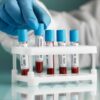What is a Lipid Profile Test and Why Is It Important for Heart Health?
In today’s fast-paced world, where stress, unhealthy eating habits, and sedentary lifestyles are common, heart-related problems are on the rise. One of the most effective ways to keep your heart in check is through regular monitoring — and that’s where a lipid profile test plays a vital role.
Understanding the Lipid Profile Test
A lipid profile test, also called a lipid test or cholesterol test, is a blood test that measures the levels of different types of fats (lipids) in your blood. These include:
- Total Cholesterol: The overall amount of cholesterol in your blood.
- LDL (Low-Density Lipoprotein): Often referred to as “bad cholesterol” because high levels can lead to plaque buildup in arteries.
- HDL (High-Density Lipoprotein): Known as “good cholesterol,” it helps remove excess cholesterol from your bloodstream.
- Triglycerides: A type of fat that stores unused calories and provides energy. High levels may increase your risk of heart disease.
Why Is the Lipid Profile Test Important for Heart Health?
Your cholesterol levels directly impact your heart health. Elevated levels of LDL cholesterol or triglycerides can contribute to the hardening or narrowing of arteries (atherosclerosis), which significantly increases the risk of heart attacks and strokes.
By identifying imbalances early, a lipid profile test gives you a chance to make lifestyle changes or begin treatments that can help prevent serious cardiac events. It acts as a critical part of a preventive health checkup, especially for individuals over 30, those with a family history of heart disease, or people managing conditions like diabetes and high blood pressure.
When Should You Get a Lipid Test?
Doctors typically recommend a lipid test:
- As part of a routine preventive health checkup
- If you have risk factors like obesity, smoking, or a sedentary lifestyle
- After the age of 30, or earlier if there’s a family history of cardiovascular diseases
Preparing for a Lipid Profile Test
In most cases, fasting for 9–12 hours before the test is recommended to get accurate results. However, some newer testing methods might not require fasting — your doctor will guide you accordingly.
What Do the Results Mean?
Once you receive your lipid profile report, here’s a general idea of what healthy levels look like:
- Total Cholesterol: Less than 200 mg/dL
- LDL: Less than 100 mg/dL (the lower, the better)
- HDL: 60 mg/dL or higher (the higher, the better)
- Triglycerides: Less than 150 mg/dL
However, interpretation should always be done by a medical professional, as individual health conditions can affect target ranges.
Final Thoughts: Take Charge of Your Heart Health
Your heart deserves consistent care, and the lipid profile test is a simple yet powerful tool in your heart health journey. By including it in your preventive health checkup, you can identify risks early, make informed decisions, and live a longer, healthier life.
If you haven’t had your cholesterol levels checked in a while, now might be the right time. A small step today could lead to a heart-healthy tomorrow.



